Iceland boasts a surplus of natural thrills, making the island a playground for adventurous nature lovers in search of something different. An exciting combination of glaciers, hot springs, icy fjords, volcanoes, snowy slopes, geysers, and otherworldly rock formations ensure a unique holiday in Iceland, and that's not even taking into account the magical Northern Lights.Although it is one of the most exciting outdoor travel destinations in the world, more conventional sightseeing in Iceland is also possible, with Reykjavik providing an impressive selection of museums and galleries, a famously fun nightlife, good shopping, and a mouth-watering array of restaurants.Reykjavik is commonly the starting point for Icelandic holidays and the most well-beaten tourist route on the island, the Golden Circle, starts in the city. This 186-mile (300km) loop can be driven in a day and covers many of Iceland's most popular tourist attractions and activities, including the Gullfoss waterfalls, the geysers of Strokkur and Geysir, and the beautiful landscapes of Thingvellir National Park. For a longer trip, and to experience more of the island than the popular south, travellers can drive Iceland's Ring Road, which circles the island and takes about a week to travel.Many travellers will find the Reykjavik City Card useful as it covers not only the major sightseeing attractions in the city but also a few excursions nearby, including a ferry ride to nearby islands and discounts for activities like whale watching and horse riding. The tourist card also allows unlimited bus transport and even includes discounts at some restaurants. The Reykjavik City Card is available in one-day, two-day, or three-day packages.
The Aurora Borealis is one of nature's most celebrated and beautiful phenomena. Also called the Northern Lights, the magical dancing blue and green lights are caused by collisions between charged particles in the highest reaches of the earth's atmosphere. The spectacular lightshow is a truly unforgettable spiritual experience. Due to the country's latitudinal position, visitors to Iceland will be pleased to know that spotting the Aurora Borealis is commonplace between September and April. Just head away from the city lights on a clear, crisp night, and the otherworldly glow in the night sky soon becomes apparent. Although somewhat of a routine display for locals, the chance of tourists seeing the Northern Lights may well be one of the main motivators for choosing Iceland as a travel destination. There are websites that make predictions on the likelihood of seeing the lights and it may be worth checking these out while planning your travel itinerary. Many of the locals will also be able to offer advice about the best places and times to see the Aurora Borealis. The further away from urban areas you get, the more intense the lights are likely to be.
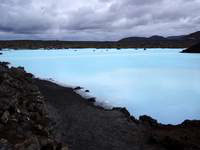
A favourite and unique attraction close to Reykjavik, about 30 miles (50km) southwest of the city, is the manmade geothermal Blue Lagoon. It is set in a lava field, filled with mineral-rich hot water pumped from about a mile below the surface. The lagoon is flanked by a luxurious health spa where visitors come to be pampered and treated for skin ailments like eczema and psoriasis. The lagoon's surreal phosphorescent aquamarine colour is caused by the therapeutic ecosystem of algae, silica, and minerals in the water. The Blueline bus company offers transport to and from the Blue Lagoon, and other transport options are outlined on the official website. Visitors should note that the Blue Lagoon is very popular and should be booked as far in advance as possible to avoid disappointment. The opening times change seasonally and can be found on the website listed below.
Address : 240 Grindavik, Iceland
Website : www.bluelagoon.com
Transport : Schedules buses are available from Reykjavik.
Opening times : Opening times are seasonal, but Blue Lagoon is generally open 8am to 9pm.
Admission : 6990 ISK for the Comfort package
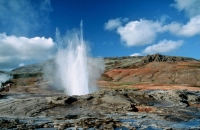
The weird landscape of the Haukadalur Valley in the southern lowlands of Iceland has been dominated for centuries by the Great Geysir. It's from here that all other such phenomena around the world have gained their name. The geyser once shot boiling water hundreds of feet into the air, but the height of the eruption has reduced in modern times. Nevertheless, it's still an impressive sight. The rest of the thermal area, bathed in a sulphuric smell, is just as fascinating, featuring several other spouting vents and geysers which frequently display their prowess. The Great Geysir has become a very popular tourist attraction, and a centre has been opened containing a multimedia geology museum and folklore exhibits. There is also a hotel, souvenir shop, and restaurant on site.
Address : Geysir Center, Geysir
Website : www.geysircenter.com
Transport : Situated on the Golden Circle tour route, or drive yourself.
Admission : Free
Iceland's famed Gullfoss (Golden) Falls are justly rated among the most beautiful in the world, and make for a popular excursion from Reykjavik. The falls, with their awesome double-cascade, are incredibly powerful, which has meant they have come under threat of being utilised as a source of hydro-electricity. Currently, however, the magnificent natural water feature, shrouded in mist and rainbows and gushing into a canyon on the Hvita River, is safely ensconced in a national park and remains one of the country's top tourist attractions. The falls can be visited on Iceland's famous Golden Circle route, and many tour operators and public buses make daily trips to the national park during the warmer months.
Address : Gullfoss National Park
Website : www.gullfoss.is
One of the tallest buildings in Iceland, this landmark church dominates the city from its highest point and is visible on a sunny day from up to 10 miles (16km) away. Named after the 17th-century Icelandic poet, hymn composer, and clergyman Hallgrimur Petursson, the church's unusual design includes volcanic basalt columns flanking its towering steeple. It took more than 40 years to build the edifice, which was finally completed in 1986. In front of the church stands a statue of Leif Eriksson, donated to Iceland by the United States. The church is lovely inside but even those uninterested in exploring this place of worship will be impressed by the striking facade. It is possible to climb the tower for views over the city.
Address : At the end of the Skólavörðustígur
Website : www.hallgrimskirkja.is
Telephone : 510 1000
Transport : Landspitalinn bus stop is a short walk away.
Opening times : Daily 9am-5pm (October to April) and 9am-9pm (May to September). Closed during Sunday mass.
Admission : ISK 1000 for adults, ISK 100 for children
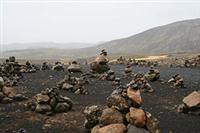
One of the most interesting cultural drawcards of Iceland must surely be the Huldufólk ('Hidden People'). In Icelandic folklore, the Huldufólk are magical invisible beings who can appear at will. Also called elves, they can be observed by humans with a talent for communicating with the hidden realm. While not many of Iceland's population believe in the Huldufólk, they remain an important element of the country's folklore and national identity. Visitors to Iceland who learn about the Hidden People will gain a lot of insight into local culture. Recommended Huldufólk-related activities include a visit to Reykjavik's Hellisgerdi Lava Park (which is supposedly full of elven homes); a trip to the Museum of Icelandic Wonders in Stokkseyri (just 37 miles/60km from the capital); and, for the really enthusiastic, a half-day course at Magnús Skarphedinsson's Álfaskólinn, the Icelandic Elf School, where you'll learn all about their world and even receive a diploma to prove it.
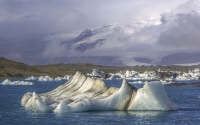
Jökulsárlón - literally, 'glacier lagoon' - is the largest glacial lake in Iceland, and an enormously popular tourist attraction. The site shot to prominence after being featured in Hollywood movies (most memorably, Batman Begins), and now attracts thousands of visitors each year. Caused by the retreat of the glacier known as Breiðamerkurjökull, the lagoon is now nearly a mile (1.5km) from the ocean's edge, and is over 814 feet (248m) deep. Most easily approached from the fishing town of Höfn on Iceland's southern coast, visitors in search of an indelible memory of their time in the country should definitely make the trip to Jökulsárlón, where luminous blue icebergs float eerily across the freezing water. Whatever you do, don't forget to pack a camera - Jökulsárlón is undoubtedly one of the best sights Iceland has to offer, and in such a staggeringly beautiful country, that's really saying something.
Website : icelagoon.is
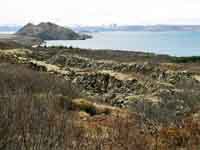
The national park of Thingvellir, 30 miles (50km) east of Reykjavik, is not only Iceland's most important historic site, but also a place of natural and geological wonder. It was here that the world's first-ever parliament, the Alting, initially convened in AD 930, and where Christianity was first introduced to Iceland. Even today, people gather at Thingvellir to celebrate any major national event. Geologically, this is the only site in the world where the American and European tectonic plates are visible. The park is also home to the largest lake in Iceland, and stunning scenery including a lava gorge, the Oxararfoss Waterfall, and the Money Chasm, where visitors drop coins down a gorge into water, to witness the strange distorted reflections that result. Activities available at Thingvellir National Park include hiking, angling, horseback riding, diving, and camping. The national park is open all year and in the warmer months a daily bus visits the park from Reykjavik.
Address : 801 Selfoss
Website : www.thingvellir.is/english

Travel Guide powered by Word Travels, copyright © 2023 Globe Media Ltd. By its very nature information in this travel guide is subject to change at short notice and travellers are urged to verify information on which they're relying with the relevant authorities. Neither Globe Media Ltd nor Travel Vogue can accept any responsibility for any loss or inconvenience to any person as a result of information contained above.